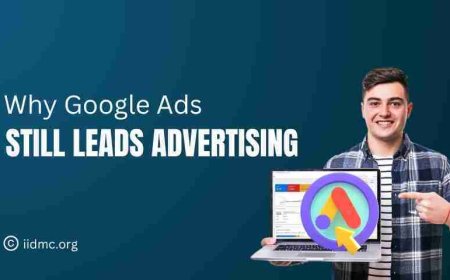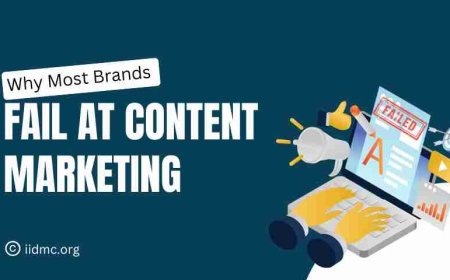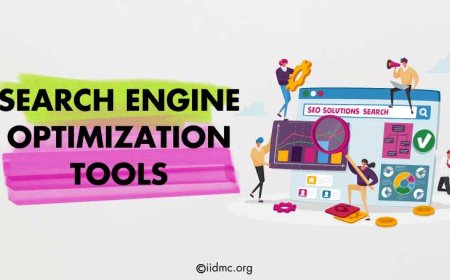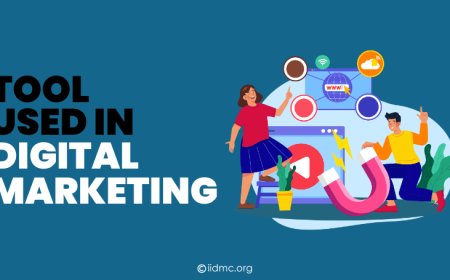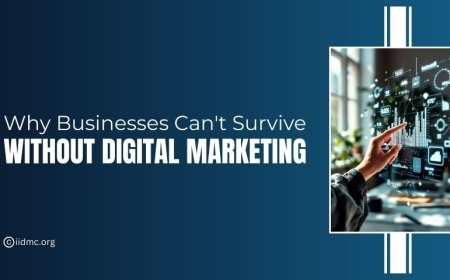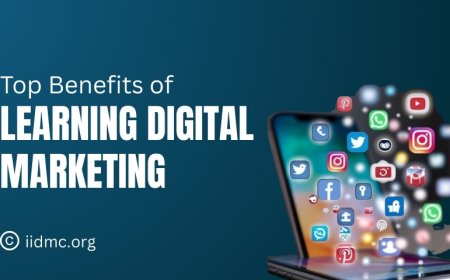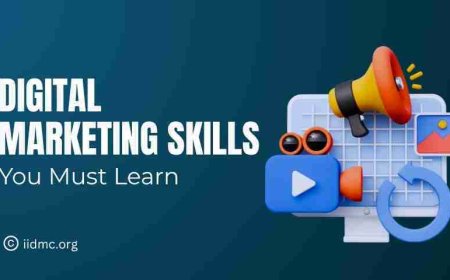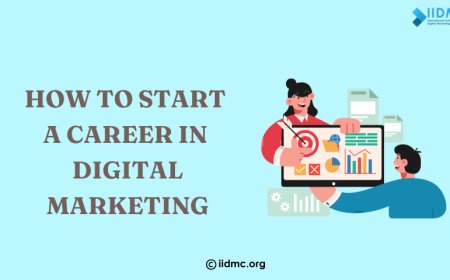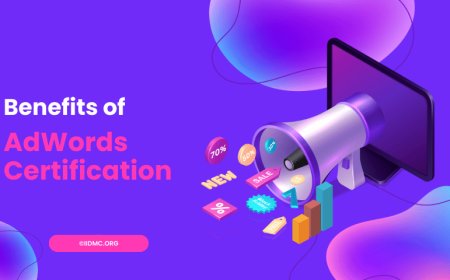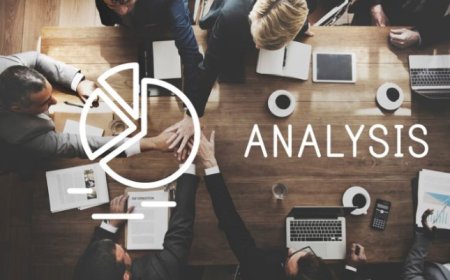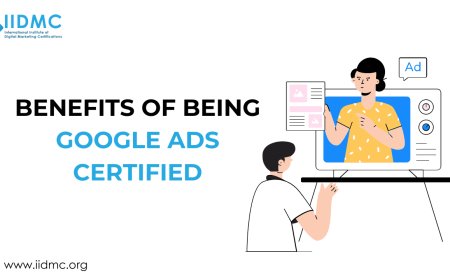Understanding the Objectives in Digital Marketing
Discover how to understand and define clear objectives in digital marketing. Learn strategies for setting effective goals, measuring success, and aligning your digital marketing efforts with your business objectives to drive growth and achieve your marketing aims.
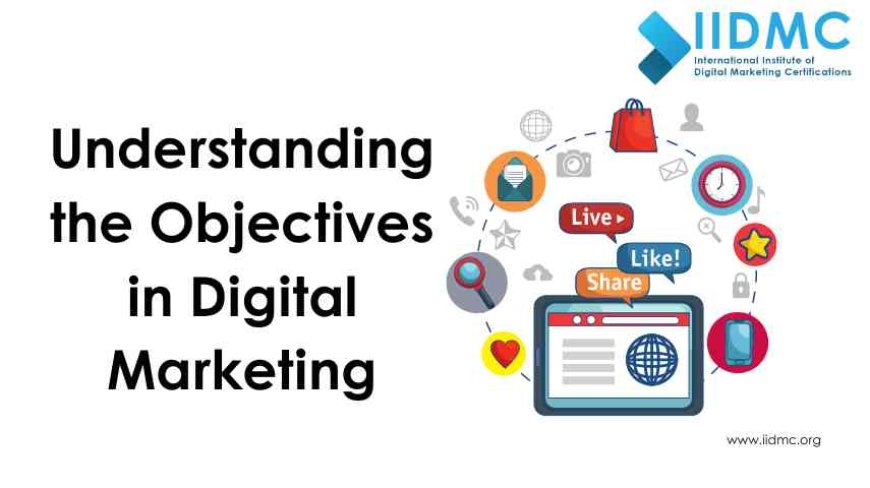
Understanding your objectives is the key to creating effective strategies that improve results. Whether it's increasing brand awareness, generating leads, or boosting conversions, defining clear goals ensures your marketing efforts are aligned with your business vision. By setting measurable objectives, you can optimize campaigns, track progress, and make informed adjustments to improve performance. In this blog, we’ll explore the essential objectives of digital marketing and how they play a crucial role in shaping successful online campaigns.
Brief Overview of Digital Marketing and Its Growing Importance
Digital marketing refers to the use of online platforms, tools, and strategies to promote products or services, engage with customers, and drive business growth. It encompasses a wide range of activities, including content marketing, search engine optimization (SEO), social media marketing, email marketing, and more. As more consumers spend time online, digital marketing has become essential for businesses to stay competitive and relevant. Its growing importance lies in its ability to reach a global audience, target specific public, and provide measurable results. Companies are increasingly shifting their budgets toward digital channels to improve visibility, drive engagement, and increase conversions.
Importance of Setting Clear and Measurable Objectives
Setting clear and measurable objectives is crucial in digital marketing because it provides a roadmap for success. Objectives help define what a campaign aims to achieve, whether it's increasing brand awareness, improving website traffic, or generating leads. Measurable objectives allow businesses to track performance, adjust strategies, and ensure that marketing efforts are aligned with business goals. Without clear objectives, digital marketing campaigns can become unfocused, leading to wasted resources and missed opportunities for growth. By establishing specific, actionable goals, companies can maximize their strategies and achieve meaningful results.
Common Objectives in Digital Marketing
-
Brand Awareness
One of the most common objectives in digital marketing is to increase brand awareness. This refers to how familiar your target audience is with your brand, and how easily they can recognize it. Brand awareness is critical for building customer trust, improving engagement, and creating long-term loyalty. -
Importance of Visibility and Recognition
Visibility is essential because it ensures that your brand stays top-of-mind for potential customers. The more frequently your audience is exposed to your brand, the more likely they are to remember it and consider your products or services. Recognition goes beyond just knowing your brand name, it includes the association of your brand with positive experiences or solutions to customer needs. Strong visibility and recognition can differentiate your brand from competitors and foster stronger customer relationships. -
Examples of How Brand Awareness Is Measured
-
Impressions: The number of times your brand's content is displayed, whether through ads, social media posts, or website views.
-
Reach: The total number of unique users who see your brand content.
-
Engagement: Interactions such as likes, shares, comments, and clicks on your content.
-
Social Media Followers: Growth in the number of followers or subscribers on platforms like Instagram, Facebook, and YouTube.
-
Brand Mentions: Monitoring the number of times your brand is mentioned across social media, blogs, or news outlets.
-
Website Traffic: An increase in visitors to your website, particularly those coming from direct searches for your brand.
Lead Generation
-
Capturing Potential Customer Interest
Lead generation focuses on attracting and capturing potential customers who have shown interest in your products or services. The goal is to gather contact information from these prospects, turning them into leads that can be promoted into paying customers. Effective lead generation involves understanding your target audience's needs and providing value that motivates them to engage with your brand. -
Strategies for Effective Lead Generation
-
Content Marketing: Create valuable and relevant content such as blog posts, eBooks, whitepapers, and webinars to attract potential leads. Offering content in exchange for contact information (e.g., through gated content) can effectively capture leads.
-
Lead Magnets: Use incentives like free trials, discounts, or downloadable resources to entice visitors to provide their contact details.
-
Landing Pages: Design dedicated landing pages with clear calls-to-action (CTAs) and forms to capture lead information. Ensure the page is focused on a single offer to increase conversion rates.
-
Email Marketing: Implement email campaigns that nurture leads through personalized content and follow-ups. Segment your email list to target leads based on their behavior and interests.
-
Social Media Advertising: Utilize targeted ads on platforms like Facebook, LinkedIn, and Instagram to reach potential leads. Use lead generation forms within these platforms to capture contact details directly.
-
Search Engine Optimization (SEO): Optimize your website and content for relevant keywords to attract organic traffic. Higher search engine rankings can drive more qualified leads to your site.
-
Webinars and Events: Host online or in-person events to engage with potential leads. Collect registrations and follow up with attendees to convert them into leads.
-
Partnerships and Collaborations: Partner with other businesses or influencers to reach a wider audience and generate leads through joint promotions or campaigns.
Conversions and Sales
-
Turning Leads into Customers
Conversions involve the process of turning leads into paying customers. This stage is critical as it represents the finalizing of your lead generation efforts and indicates the effectiveness of your sales and marketing strategies. To achieve successful conversions, businesses need to employ strategies that nurture leads, address their needs, and persuade them to make a purchase. This can include personalized follow-ups, offering tailored solutions, and optimizing the sales funnel to reduce friction and improve the customer experience. -
Metrics Used to Track Conversions
-
Conversion Rate: The percentage of leads that complete a desired action, such as making a purchase. It is calculated by dividing the number of conversions by the total number of leads and multiplying by 100.
-
Cost per Conversion: The average cost spent to acquire each conversion. It is calculated by dividing the total cost of the marketing campaign by the number of conversions.
-
Customer Acquisition Cost (CAC): The total cost associated with acquiring a new customer, including marketing and sales expenses. It helps evaluate the efficiency of your lead generation and conversion strategies.
-
Sales Funnel Conversion Rate: Measures the percentage of leads that move through each stage of the sales funnel, from initial contact to final purchase. This helps identify bottlenecks in the funnel.
-
Lead-to-Customer Ratio: The ratio of leads that become customers. It is calculated by dividing the number of customers by the number of leads and helps assess the quality of leads and the effectiveness of the conversion process.
-
Revenue per Lead: The average revenue generated from each lead. It is calculated by dividing the total revenue by the number of leads and helps determine the value of each lead.
-
Time to Conversion: The average time taken for a lead to convert into a customer. Shorter times to conversion often indicate more effective sales and marketing efforts.
-
Return on Investment (ROI): Measures the profitability of marketing campaigns by comparing the revenue generated from conversions to the costs of the campaigns. It is calculated by subtracting the cost of the investment from the revenue generated, then dividing by the cost of the investment.
Setting SMART Objectives
Specific, Measurable, Achievable, Relevant, Time-bound Goals
SMART objectives provide a structured approach to goal-setting that ensures clarity and focus. Here’s a breakdown of each component:
-
Specific: Clearly define what you want to achieve. Objectives should be precise and unambiguous.
-
Measurable: Establish criteria to track progress and determine when the goal has been met. This often involves quantitative metrics.
-
Achievable: Ensure that the goal is realistic given the resources and constraints. It should be challenging but attainable.
-
Relevant: Align the objective with broader business goals and ensure it adds value to your marketing efforts.
-
Time-bound: Set a clear deadline or timeframe for achieving the goal to maintain urgency and accountability.
Examples of SMART Objectives in Digital Marketing Campaigns
-
Increase Website Traffic
-
Specific: Increase the number of monthly visitors to our website.
-
Measurable: Achieve a 20% increase in website traffic.
-
Achievable: Implement a content marketing strategy and SEO improvements.
-
Relevant: Higher traffic will lead to more opportunities for conversions.
-
Time-bound: Achieve this goal within the next 3 months.
-
Boost Social Media Engagement
-
Specific: Enhance engagement on our Instagram account.
-
Measurable: Increase average post engagement (likes, comments, shares) by 30%.
-
Achievable: Use targeted ads and engage with followers through interactive content.
-
Relevant: Higher engagement will build brand loyalty and visibility.
-
Time-bound: Accomplish this within the next 6 weeks.
-
Generate Marketing Qualified Leads (MQLs)
-
Specific: Increase the number of MQLs from our email campaigns.
-
Measurable: Generate 150 new MQLs.
-
Achievable: Use targeted email lists and personalized offers to attract high-quality leads.
-
Relevant: More MQLs will improve the sales pipeline and conversion rates.
-
Time-bound: Achieve this target within the next 2 months.
-
Improve Conversion Rate
-
Specific: Enhance the conversion rate of our landing pages.
-
Measurable: Achieve a 10% increase in conversion rate.
-
Achievable: Optimize landing page design and test new CTAs (Call-to-Actions).
-
Relevant: Higher conversion rates will lead to more sales and revenue.
-
Time-bound: Reach this goal within the next quarter.
-
Increase Email Open Rates
-
Specific: Improve the open rates of our monthly email newsletters.
-
Measurable: Achieve a 25% increase in open rates.
-
Achievable: Revise email subject lines and segment email lists for better targeting.
-
Relevant: Higher open rates can lead to increased engagement and conversions.
-
Time-bound: Accomplish this within the next 6 weeks.
Tracking and Measuring Success
Key Performance Indicators (KPIs) to Monitor:
-
Website Traffic: Number of visitors to your site.
-
Conversion Rate: Percentage of visitors who complete a desired action.
-
Click-Through Rate (CTR): Ratio of clicks to impressions on ads or emails.
-
Cost Per Acquisition (CPA): Cost to acquire a new customer.
-
Return on Investment (ROI): Profitability of marketing campaigns.
-
Customer Lifetime Value (CLV): Total revenue expected from a customer over their lifetime.
-
Engagement Metrics: Likes, shares, comments, and interactions on social media.
-
Bounce Rate: Percentage of visitors who leave your site after viewing only one page.
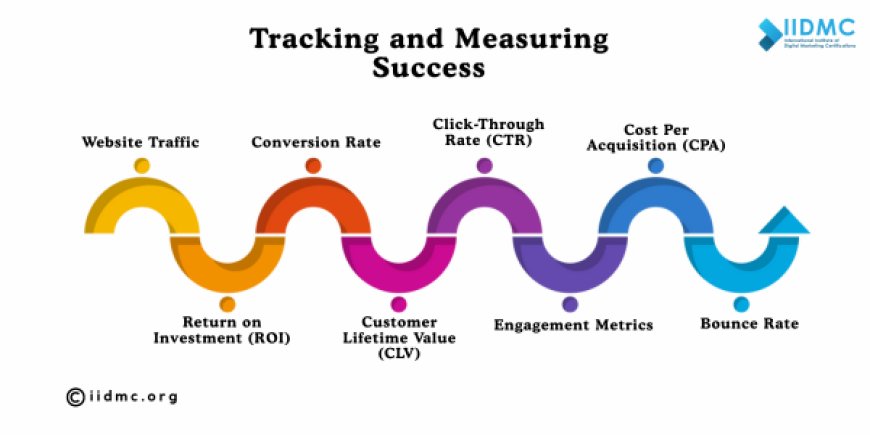
Tools for Tracking Digital Marketing Performance:
-
Google Analytics: Provides insights into website traffic, user behavior, and campaign performance.
-
CRM Systems (e.g., Salesforce, HubSpot): Tracks customer interactions, leads, and sales metrics.
-
Social Media Analytics (e.g., Facebook Insights, Twitter Analytics): Measures engagement and performance on social platforms.
-
Email Marketing Platforms (e.g., Mailchimp, Constant Contact): Tracks open rates, click-through rates, and conversions from email campaigns.
-
Ad Platforms (e.g., Google Ads, Facebook Ads Manager): Monitors ad performance, CTR, and cost metrics.
-
Heatmap Tools (e.g., Hotjar, Crazy Egg): Visualizes user interactions on your site to improve UX.
Adapting Objectives Based on Insights
-
Importance of Analyzing Performance Data
Regularly analyzing performance data is crucial for understanding the effectiveness of your digital marketing efforts. By evaluating metrics such as website traffic, conversion rates, and customer engagement, you can identify what’s working and what’s not. Data analysis helps pinpoint areas that need improvement, highlights trends, and allows you to make informed decisions for optimizing your campaigns. This process ensures that your objectives remain aligned with actual performance. -
Adjusting Strategies to Meet Evolving Market Demands and Customer Needs
Market conditions and customer preferences are constantly changing, making it essential to adapt your marketing strategies. By reviewing performance data, you can adjust your objectives to reflect new opportunities, competitive world , and customer behavior. This could involve refining your targeting, optimizing your messaging, or reallocating resources to channels that give better results. Regular adjustments help you stay quick and responsive, ensuring that your digital marketing efforts continue to meet evolving demands and deliver results.
Clear objectives in digital marketing are essential for improving focused and measurable success. Setting specific, measurable, achievable, relevant, and time-bound (SMART) goals ensures that your marketing efforts are aligned with business priorities. By tracking key performance indicators (KPIs) and utilizing data analysis tools, businesses can effectively monitor progress and makedata-based choices.
Continuous evaluation and refinement of objectives are crucial to adapt to changing market conditions and customer needs. This ongoing process helps ensure that strategies remain effective and result in meaningful outcomes. Partnering with organizations like IIDMC can further enhance your ability to stay competitive by offering information and certifications that keep your digital marketing skills sharp.
Stay committed to regularly assessing your marketing objectives, refining them as needed, and achieving better long-term results.

